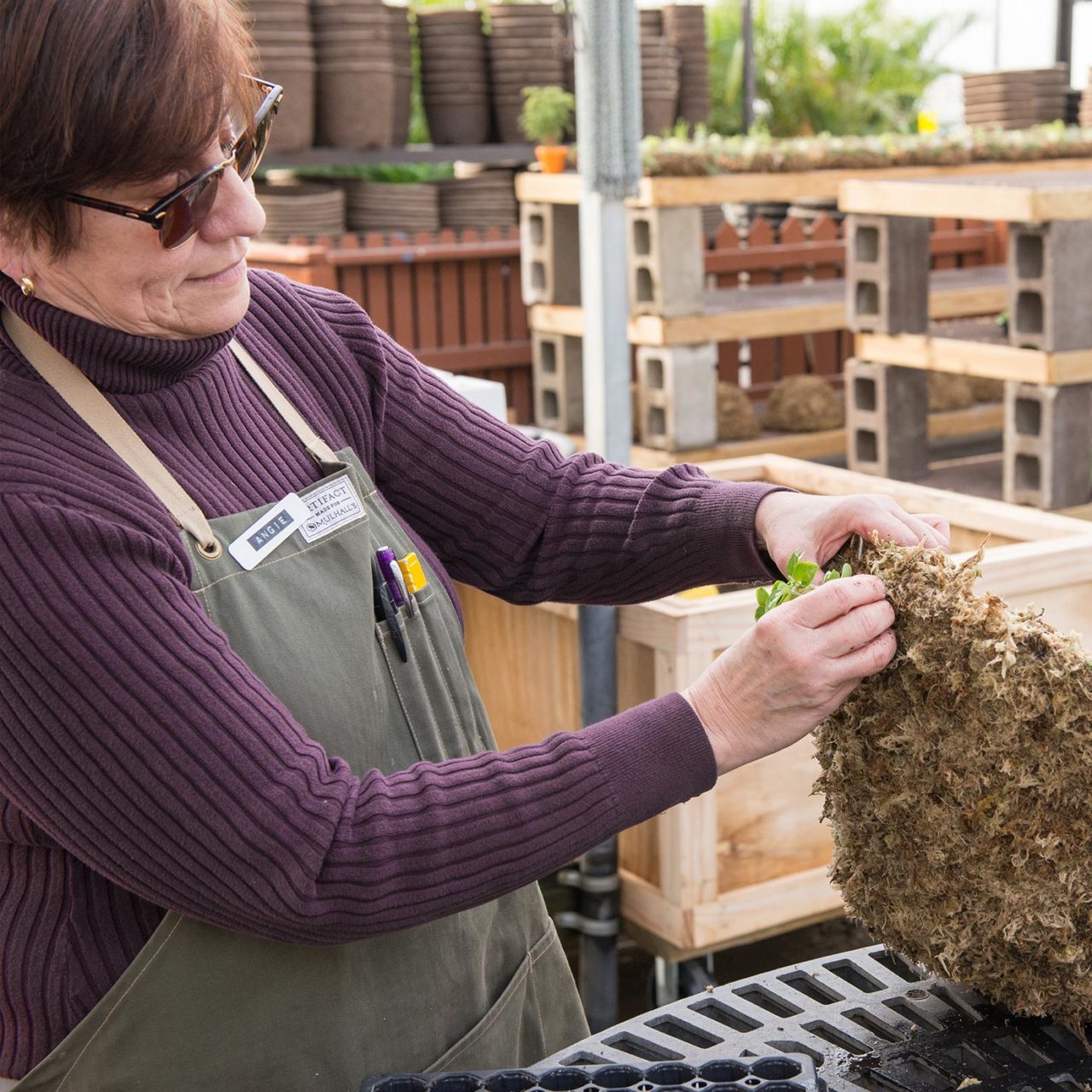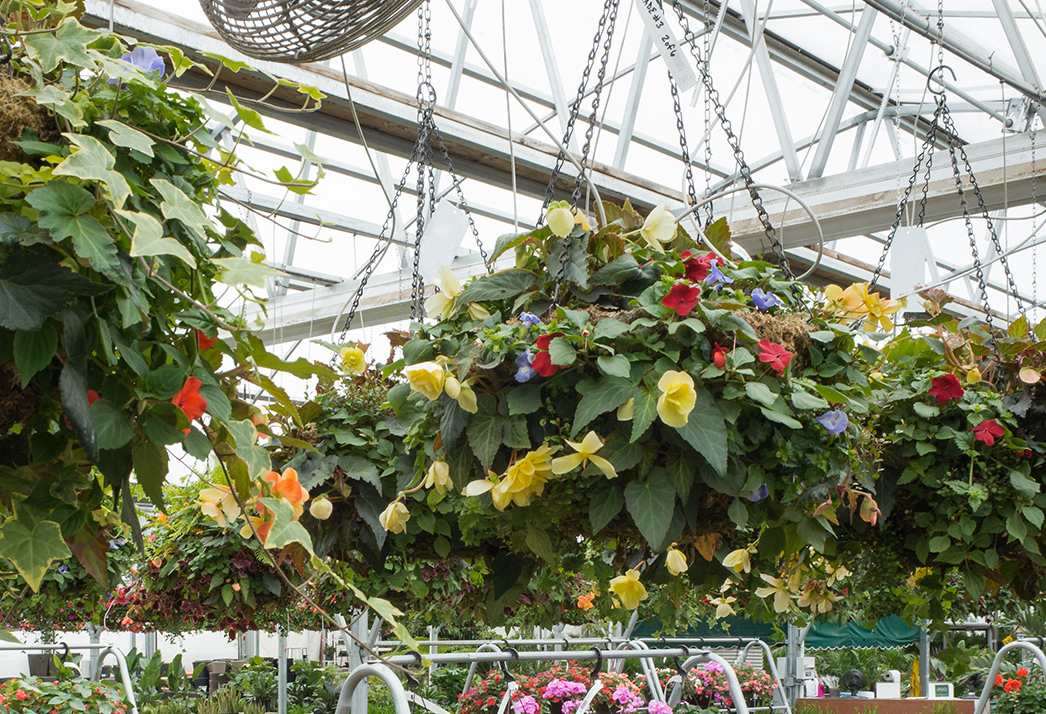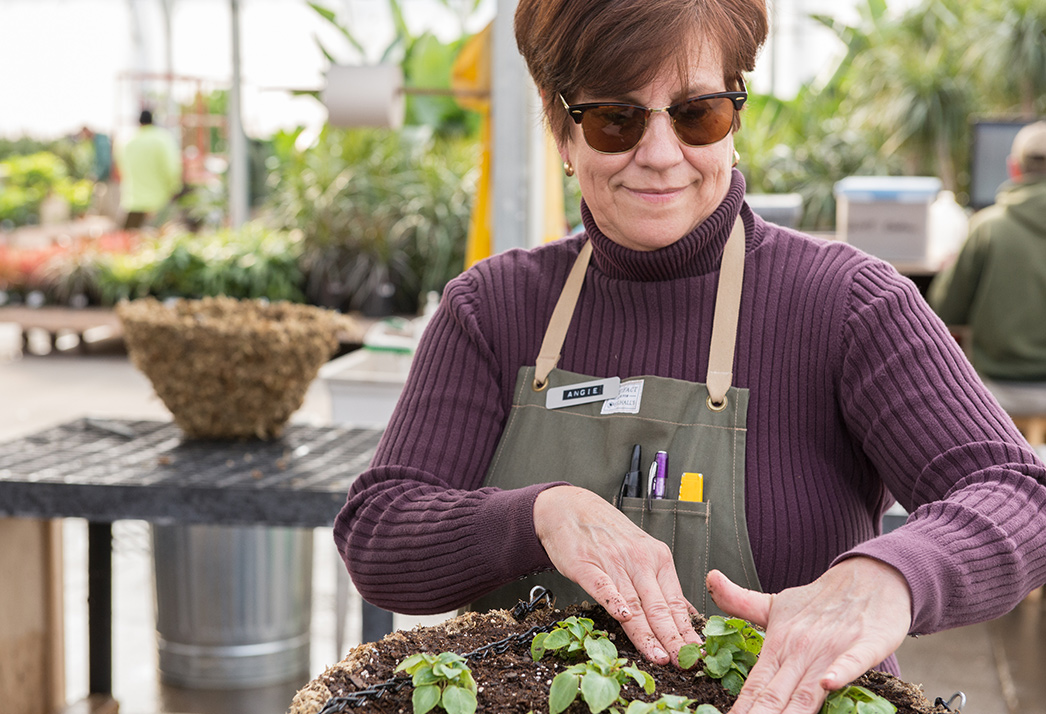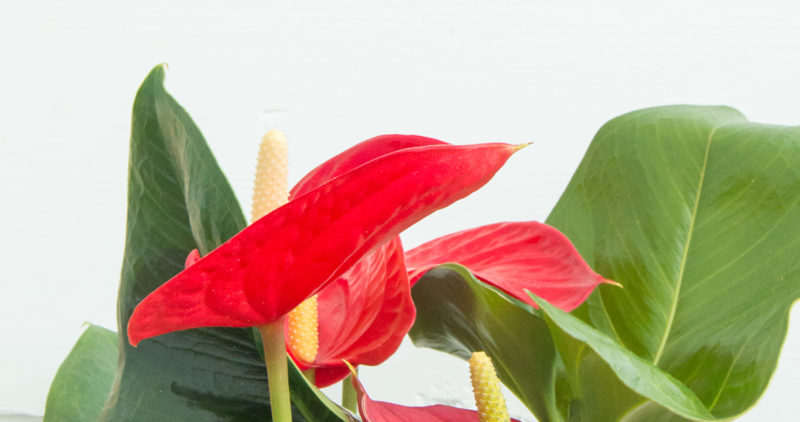
Snow might be on the ground outside, but in our Container Design area, the mood is positively spring-like. It’s time to make the moss baskets. In the coming weeks, the Container Design team will be busy poking thousands of little plants into the sides of hundreds of dripping moss-lined baskets, filling the baskets with soil, and then hanging them one-by-one. It’s a process and a passion that our own Container Design teams – past and present – have perfected over many years. Over the next few months, the growth of these little plants will completely transform the baskets into signature creations – filling our greenhouse ceiling with a hanging sea of flowers, foliage, and color. And it all starts with a plan and some very tiny plants.



Planting begins in late-February, but the process of creating a moss basket actually starts long before that. In the middle of July, team leader Angie Phillipp starts thinking about the next year’s crop of baskets. Drawing on years of experience working with moss baskets and the plants that grow in them, Angie starts formulating a plan. Our moss baskets come in 12-, 16-, and 20-inch diameters. They also come in different styles including both sun- and shade-loving combinations – plus the brilliantly colored impatiens baskets. Based on goals she’s set for the coming year, Angie decides how many baskets of each size and style her team will create and the plant combinations – or recipes – they’ll hold. As she creates the designs, Angie looks at photos she’s taken of past basket combinations as they’ve developed from planting to maturity. She incorporates feedback she receives from customers too. She also looks at new varieties of annuals and determines whether they’ve got the look and growth characteristics suitable for life in a moss basket. If they do, she might try a few of them too. But, most of the plants she uses in her designs are tried and true varieties that have provided reliable growth and beauty in the baskets over the years.
As Angie decides which varieties to choose for each recipe, she has to think about several aspects of each type of plant. Some are terrific bloomers. Some have amazing foliage. Some mound, and some drape. Some plants are aggressive and would take over if not hemmed in by neighboring plants in the basket, and others are more reticent. Each design is a balancing act of color, form, texture, and plant “behavior.” In the end, the perfect combination works as a unit to stand tall in the top of the basket, completely cover the sides, and cascade beautifully toward the ground. It’s a lot to consider, but Angie loves the creative challenge.
Based on her basket designs and what she predicts she’ll need for the many custom basket orders that come in, Angie places an order in the fall for the little plants – we call them plugs. Dozens of trays of these baby plants begin arriving in late-February, and soon after, moss basket production starts. Each year, Angie’s team includes members with all levels of moss basket experience. Moss basket veterans pass along their experience and help new team members learn the process: how to read a moss basket recipe, how to position the plugs in the moss, how much fertilizer to use, and how densely to pack the soil – there’s a lot of technique to absorb. But, every year, the team works together to create hundreds of these beautiful baskets in just a few short weeks.
By early April, all the baskets are completed and hanging on chains from the greenhouse ceiling. Then the watching begins. The baskets are watered with a timed dripper system, but Angie still keeps a sharp eye on each one to make sure it’s getting the moisture it needs to grow properly. In addition to water, the baskets need frequent attention for other reasons too. Some plugs don’t make it and need to be replaced, and some styles of basket require periodic trimming to encourage branching and full growth too. It’s a labor-intensive responsibility involving countless trips up and down ladders, but it’s worth every minute because as each week passes, the baskets complete an amazing transformation. One week, they’re just dark brown bowls with little green leaves poking out here and there. The next week, the green gets larger and begins to cover more and more of the moss. A week later, a few sunny days warm the greenhouse, and across the ceiling, blooms begin popping – one here, another there. Soon, color seems to explode from every corner. By the time May arrives, the baskets are lush and full of flowers, and the once-tiny plants now cover the greenhouse ceiling from one side to the other in swaths of beautiful color. Then, one-by-one, they quickly find a new home and leave the greenhouse.
If you’re in the store, stop by and see what the Container Design team is up to. In addition to the moss baskets, they’ve already planted moss balls and wreaths with tiny succulent plants – these plant babies need an extra-long time to grow. When the annual plants begin to arrive, the team will put together hundreds of porch baskets – woven baskets filled with annuals and perfect for setting on the front patio. And they’ll start designing and planting the many custom planter orders that will be coming in too.
But even with all that going on, the moss baskets are the main focus right now. As the weeks pass, come visit the team in Container Design and take note of the baskets’ progression. It’s fascinating to watch those tiny plants grow into beautiful baskets as we wait for spring.


